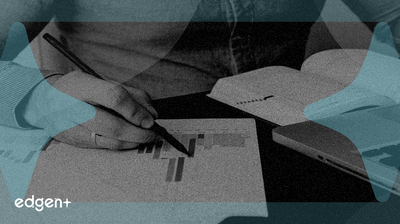Related News

UAE's New Financial Law Mandates Central Bank Licensing for DeFi and Web3
## Executive Summary The United Arab Emirates has fundamentally reshaped its financial landscape with the introduction of **Federal Decree-Law No. 6 of 2025**, which took effect on September 16, 2025. The new law brings Decentralized Finance (DeFi), Web3 projects, and other cryptocurrency-related services under the direct supervisory authority of the **Central Bank of the UAE (CBUAE)**. This mandate requires any firm providing digital asset services in or from the UAE to secure a federal license, signaling a major shift from a previously less stringent regulatory environment towards a formal, centralized framework. ## The Event in Detail Federal Decree-Law No. 6 of 2025 repeals and replaces the previous banking law from 2018, significantly expanding the CBUAE's mandate. The law explicitly targets a wide range of virtual asset services, including payment, trading, lending, investment, and custody. Under the new regulations, companies wishing to engage in these activities must apply for a license from the CBUAE. The application process involves submitting detailed documentation, including the nature and scope of proposed activities and projected financial statements. This move consolidates power under a single regulator, unifying the oversight of traditional banking, insurance, and the emerging digital asset sector. Non-compliance carries severe penalties, with potential fines reportedly reaching up to $272 million, creating a strong deterrent against unlicensed operations. ## Market Implications The primary implication for the market is a substantial increase in regulatory and compliance obligations for crypto-native firms. The law introduces a higher barrier to entry, particularly for startups and projects in the DeFi space that have historically operated with greater autonomy. A key area of concern within the industry is the regulation's application to self-custody or non-custodial wallet providers, a foundational element of the Web3 ecosystem. The ambiguity in this area has created uncertainty, as forcing such services into a traditional licensing model could present significant operational and philosophical challenges. For established players, however, the law offers a degree of regulatory clarity that was previously absent. This formal framework may attract institutional investment by providing a clear legal structure for conducting business, thereby legitimizing the digital asset industry within the UAE's broader economy. ## Broader Context This legislation solidifies the UAE's strategic goal of becoming a premier, regulated global hub for the digital asset industry. By creating a comprehensive federal framework, the UAE aims to foster a secure and stable environment for innovation and investment. This approach places it in contrast with other global jurisdictions that have either adopted more restrictive measures or have yet to provide clear regulatory guidance. It is important to note that the UAE maintains a dual regulatory system. Financial free zones such as the **Abu Dhabi Global Market (ADGM)** and the **Dubai International Financial Centre (DIFC)** operate under their own legal systems based on English common law. These zones have been proactive in creating their own virtual asset frameworks. The new federal law primarily governs onshore entities, creating a distinct but parallel system that firms must navigate when choosing their operational base within the UAE.

Bridgepoint to Acquire Majority Stake in Crypto Auditor ht.digital for £200M
## Executive Summary Private equity firm **Bridgepoint** has agreed to acquire a majority stake in **ht.digital**, a specialist firm providing assurance and technology services for the digital asset sector. The deal, valued by market reports at £200 million (approximately $262 million), signifies a notable injection of institutional capital into the crypto market's foundational infrastructure. This move highlights a growing emphasis on compliance, transparency, and financial rigor as the digital asset class matures and integrates with traditional finance. ## The Acquisition in Detail The transaction involves **Bridgepoint**, a prominent mid-market private equity investor, taking a majority ownership position in **ht.digital**. While the companies did not formally disclose the financial terms, Sky News reported the deal's value at £200 million. This strategic partnership provides **ht.digital** with substantial capital and the backing of an established institutional player, positioning it for significant expansion. The acquisition is a clear indicator of investor confidence in the non-speculative, service-oriented segments of the cryptocurrency industry. ## Market Implications The acquisition is a strong bullish signal for the maturation of the digital asset ecosystem. The entry of a major private equity firm like **Bridgepoint** into the crypto-native audit and assurance space underscores the critical need for robust compliance frameworks. As institutional investors, corporations, and regulated financial entities increase their exposure to digital assets, the demand for independent, credible verification of holdings and operations has become paramount. This deal is expected to serve as a catalyst for further merger and acquisition (M&A) activity within the digital asset compliance, audit, and technology sectors as the industry consolidates and professionalizes. ## Broader Context This investment fits into a wider trend of traditional finance (TradFi) engaging with the digital asset market through "picks and shovels" plays. Rather than directly investing in volatile cryptocurrencies, institutional capital is flowing into the essential ancillary services that support the ecosystem, such as custody, data analytics, and compliance. **Bridgepoint's** acquisition of **ht.digital** mirrors a strategy focused on capitalizing on the overall growth of the digital asset class itself. It suggests a long-term perspective that the future of digital assets is predicated on its successful integration with the global financial system, requiring the same level of assurance and trust as traditional markets.

Goldman Sachs Report Reveals Targeted Short-Selling in AI-Adjacent Stocks and Utilities
## Executive Summary Recent analysis from **Goldman Sachs** reveals that U.S. stock short interest has climbed to a five-year peak, signaling a strategic shift in hedge fund activity. Rather than betting against the entire artificial intelligence sector, funds are targeting specific companies perceived as overvalued beneficiaries of the AI trend, alongside the utility sector, which faces significant infrastructural challenges from AI-driven energy consumption. This nuanced bearishness is corroborated by warnings from other major financial institutions about a potential valuation correction in the AI market. ## The Event in Detail According to the **Goldman Sachs** report, hedge funds are not initiating massive short positions against AI industry leaders. Instead, their strategy is to identify and short "weak AI companies"—firms that have experienced stock price appreciation due to market enthusiasm for AI but do not possess core technological or competitive advantages. This indicates a sophisticated approach to separating hype from substance within the booming sector. The primary targets are companies that appear to be part of an "AI-related bubble" and are vulnerable to a market downturn or a shift in investor sentiment. ## Deconstructing the Short Thesis: Energy and Infrastructure A significant component of the short-selling thesis centers on the utility sector and its capacity to handle the exponential growth in energy demand from AI data centers. **Goldman Sachs Global Investment Research** projects that data center power demand will surge by 160% by 2030, with these facilities potentially consuming up to 9% of total U.S. electricity generation, a sharp increase from approximately 1.5% today. The report highlights that new AI server racks require ten times more power than their cloud computing predecessors. Short-sellers are betting that the market has not fully priced in the immense strain this will place on the existing power grid. An estimated **$5 trillion** in funding will be needed for digital and power infrastructure to meet this demand, presenting a significant capital challenge for utility companies and creating a bottleneck for AI expansion. ## Market Implications and Expert Commentary The targeted short-selling aligns with broader expert concerns over AI valuations. **JPMorgan Chase & Co. Vice Chairman Daniel Pinto** has publicly warned of a probable "correction" in the AI industry, stating that any significant decline would have ripple effects across the entire stock market. This sentiment reflects a growing bifurcation in the market. While big tech companies are expected to invest an estimated **$1 trillion** in AI by 2027, the market is simultaneously becoming more critical of companies on the periphery. The current short-selling activity is not a bet against the long-term viability of AI but rather a calculated position against overvalued assets and the unpreparedness of critical infrastructure. ## Broader Context The strategic shorts represent a mature phase in the market's relationship with AI. Investors are moving beyond a simple "long AI" position and are now engaging in more complex strategies that account for infrastructural limitations and nuanced company fundamentals. This suggests that while the core AI trend remains robust, its ecosystem is now subject to more rigorous financial scrutiny. The performance of utility stocks and peripheral AI-related companies will likely serve as a key indicator of the market's ability to navigate these emerging challenges.
